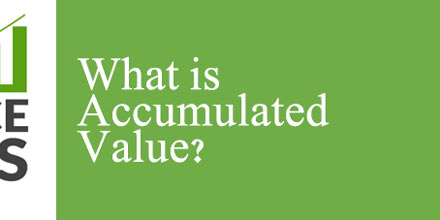
Certificates of Deposit (CDs) offer a secure method to increase savings with higher interest rates compared to standard savings accounts. However, they require locking your money away for a set period. If you need to withdraw early, you'll encounter CD early withdrawal penalties. Understanding these penalties is vital for informed decision-making. This article explains what CD early withdrawal penalties are, lists ten common penalties, and provides practical advice on managing them.
What is CD Early Withdrawal Penalties
CD early withdrawal penalties are fees charged by banks when you withdraw money from your CD before the term ends. These penalties discourage early withdrawals and compensate the bank for lost interest. The specifics vary depending on the bank, the type of CD, and the term length. Generally, the penalty is calculated as a certain number of months worth of interest, but it can sometimes involve reducing the principal amount as well.
Unveiling the 10 CD Early Withdrawal Penalties
CD early withdrawal penalties are charges imposed when you withdraw money from a Certificate of Deposit before the agreed-upon term has expired. These penalties are designed to discourage early withdrawals and compensate the bank for lost interest earnings.
Three Months of Interest Penalty
One of the most common penalties for early withdrawal from a CD is forfeiting three months' worth of interest. This penalty is typical for short-term CDs, such as those with terms of one year or less. If you withdraw your funds early, you lose the interest you would have earned over three months. This type of penalty is often seen as a moderate deterrent, as it represents a relatively short period of lost interest. However, it can still impact your overall earnings if you frequently need to access your funds before maturity.
Six Months of Interest Penalty

For CDs with terms longer than one year, banks often impose a penalty of six months' interest. This means if you withdraw your money before the CD matures, you'll lose the interest you would have earned over six months. This penalty is more significant than the three-month penalty and can substantially affect the returns on your investment. It is designed to protect the bank's interests while discouraging early withdrawals from longer-term investments.
Twelve Months of Interest Penalty
For longer-term CDs, such as those with terms of three to five years, the penalty can be as severe as twelve months' interest. This significant penalty is meant to strongly discourage early withdrawals and protect the bank's interest earnings. Losing a year's worth of interest can be a substantial financial setback, so this penalty is a critical consideration for anyone contemplating breaking a long-term CD.
Principal Reduction Penal
In some cases, if the interest earned does not cover the penalty amount, the bank might deduct the remaining penalty from your principal. This means you could end up with less money than you originally deposited. This type of penalty is particularly harsh, as it not only reduces your earnings but also your initial investment. It's a reminder to carefully read the terms and conditions of your CD agreement to understand the potential risks.
Interest Rate Adjustment Penalty
Some banks adjust the interest rate applied to your CD if you withdraw early. Instead of the originally agreed rate, a lower rate is applied retroactively to the time your funds were in the CD, reducing your overall earnings. This penalty can be complicated to calculate but generally results in a lower effective interest rate on your investment. It's a way for banks to recoup some of the interest they would have paid you under the original terms.
Penalty-Free Withdrawals
Certain CDs offer penalty-free withdrawals, typically for a specific amount or after a certain period. However, these options often come with lower interest rates, balancing the benefit of flexibility with reduced earnings. Penalty-free CDs can be an attractive option for those who anticipate needing access to their funds but are willing to accept lower returns in exchange for that flexibility.
Variable Penalty Based on Term Length
Some financial institutions impose a penalty that varies depending on how far into the CD term you are when you withdraw. The closer you are to the maturity date, the smaller the penalty might be, providing some relief for late-term withdrawals. This type of penalty structure can be more favorable for investors who may need to access their funds unexpectedly, as it reduces the penalty over time.
No Penalty CDs

There are no-penalty CDs available that allow you to withdraw your money without any penalty before the term ends. These CDs generally offer lower interest rates as a trade-off for this flexibility. No-penalty CDs are ideal for those who want to invest their money but need the assurance that they can access it without incurring fees.
Early Withdrawal Penalty Waivers
In special circumstances, such as death or disability, some banks offer penalty waivers. These waivers are designed to provide financial relief during difficult times but usually require documentation to be applied. It's important to check with your bank about the specific conditions and documentation required for these waivers. While not commonly needed, these waivers can be a crucial support during challenging life events.
Tiered Penalty Structure
Some banks use a tiered penalty structure where the penalty increases with the length of the CD term. For example, a one-year CD might have a three-month penalty, while a five-year CD might have a twelve-month penalty. This structure encourages customers to commit to longer terms by making shorter-term CDs more appealing. It offers a clear incentive structure that balances the bank's need to secure long-term deposits with the investor's desire for shorter-term flexibility.
Conclusion
Understanding CD early withdrawal penalties is essential for anyone considering investing in a Certificate of Deposit. These penalties are designed to protect the bank's interest earnings and discourage early withdrawals, but they can vary widely in their severity and structure. By familiarizing yourself with the common types of penalties, such as forfeiting a set amount of interest or facing principal reductions, you can make more informed decisions about your savings and avoid unexpected costs.











